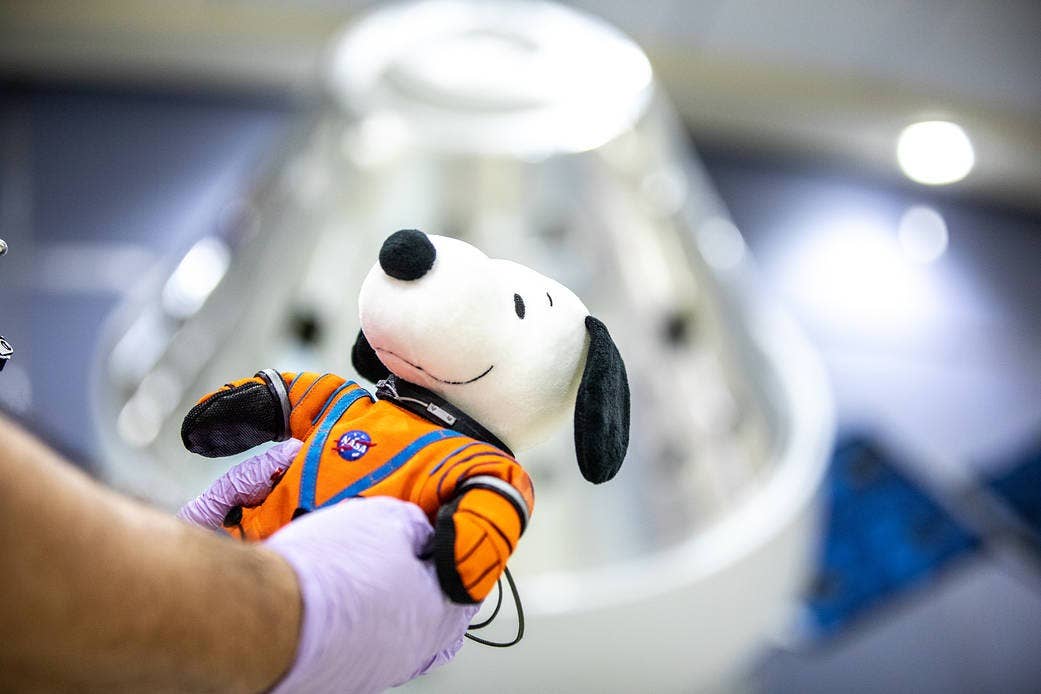Snoopy in Space Has Spanned the Decades
For more than 50 years, the beloved Charles Schulz cartoon character has served as NASA’s mascot of the manned spaceflight program.

Snoopy returns from the Artemis I mission. [Courtesy: NASA]
What's a Snoopy doll doing in the gift shop at an aviation museum? These days, he's generating interest in the space program.
By the time the first manned moon landing took place on July 20, 1969, Charles Schulz had already sent Snoopy into space in the panels of the cartoon. The anthropomorphic dog had a rich fantasy life, and adventure and aviation was part of it. He often donned a cloth flying helmet and red scarf and turned his doghouse into a Sopwith Camel.
According to NASA, Snoopy has been part of its team for more than 50 years. When you see photographs of astronaut workspaces in the Kennedy Space Center in Florida, they often show Snoopy toys on desks or bookshelves.
Snoopy joined NASA in 1968 as the mascot for the manned spaceflight program. According to multiple articles written about Snoopy joining NASA, it was seen as a risky move, because just months earlier in January 1967, the Apollo 1 capsule caught fire while on the launch pad, killing astronauts Gus Grissom, Ed White, and Roger Chaffee. No one wanted to make light of the serious business of spaceflight.
But Snoopy proved he had the right stuff. Snoopy's first foray into space—outside a drawing in the pages of the comic strip—was in 1968 when astronauts Jim Lovell, Frank Borman and Bill Anders took Snoopy lapel pins with them aboard Apollo 8. This became a tradition, and according to NASA, Snoopy is the only NASA astronaut with a career that spans from Apollo to Artemis 1.
A Snoopy toy beagle has been to the moon, orbited the Earth in a space shuttle, and been to the International Space Station.
Snoopy became so important that NASA had in-house artists to draw his likeness. The agency also created the Silver Snoopy Award', which is a lapel pin given to NASA employees who go above and beyond their duties and provide valuable contributions to make sure the missions are safe and successful.
The award is only bestowed once in a person's career and the criteria is stringent. What the person does to receive the award must in some fashion support and improve spaceflight. Each lapel pin is flown in space before it is awarded to the team member.
Meanwhile, Back on Earth…
Terrestrial aviation also celebrates Schulz. In Santa Rosa, California, pilots can fly into Charles M. Schulz Sonoma County Airport (KSTS). Schulz lived in Santa Rosa for 30 years.
The airport was used by the U.S. Army during World War II, and in 1946 transitioned to civilian use.
Today, Snoopy in his WWI flying ace persona atop his doghouse is part of the airport logo. In addition, fixes for ILS for Runway 32 have Peanuts-inspired names. Because instrument approach fixes are required to have five letters in their names the FAA could be creative. There is an intermediate approach fix labeled LUSEE, and the glideslope intercept is PIGPN.

Sign-up for newsletters & special offers!
Get the latest FLYING stories & special offers delivered directly to your inbox






